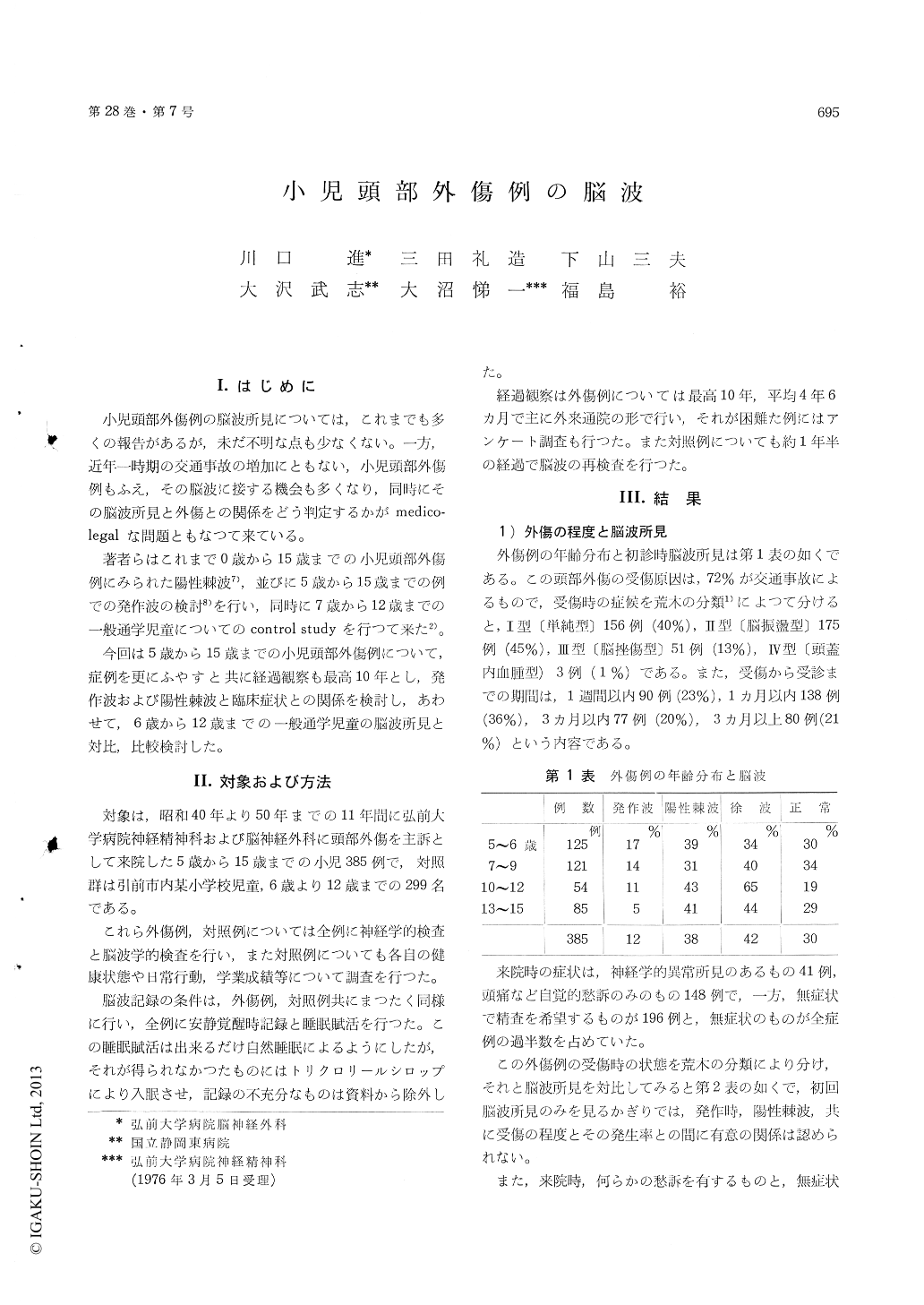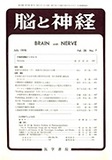Japanese
English
- 有料閲覧
- Abstract 文献概要
- 1ページ目 Look Inside
I.はじめに
小児頭部外傷例の脳波所見については,これまでも多くの報告があるが,未だ不明な点も少なくない。一方,近年一時期の交通事故の増加にともない,小児頭部外傷例もふえ,その脳波に接する機会も多くなり,同時にその脳波所見と外傷との関係をどう判定するかがmedico—legalな問題ともなつて来ている。
著者らはこれまで0歳から15歳までの小児頭部外傷例にみられた陽性棘波7),並びに5歳から15歳までの例での発作波の検討8)を行い,同時に7歳から12歳までの一般通学児童についてのcontrol studyを行つて米た2)。
An attention was drawn to the seizure:discharges seen in the EEG in cases of mild head injury of children. A question arises whether the seizure discharges, if any, are exclusively due to the head injury. If it is so, then what will be prognostic significance. The authors investigated the EEGfindings of 385 cases of children with head injury. Their age ranged from 5 to 15 years. They were followed up for maximally 10 years with an average of 4 years. Their EEG findings were compared to those of 299 cases of unselected primary school children whose age ranged from 6 to 12 years. In about one third of the head injury group, the in-jurues were so mild that they had no loss of con-sciousness at the time of the injury. About the half of the head injury group had no subjective complaints at the time of the EEG recordings.
The followings conclusions were made.
1) The epileptic seizure discharges were seen in 12% of the head injury group and in 10% of the control group.
2) The 14 and 6Hz positive spikes were also found in 38% of the head injury group and 59% of the control group.
3) The clinically evident convulsive seizures (late epilepsy) were found in 9 cases of the head injury group, 8 of them showed spikes and slow wave complexes in the initial EEG recordings and even-tually all of the cases showed the same patterns on the follow-up study.
4) There were no clinically evident convulsive seizures in whom had only isolated spikes without slow waves components on the EEG.
5) The 14 and 6Hz positive spikes and isolated spikes without slow wave components were con-sidered to be insignificant as a sequela of the head injury.
6) The spike and slow wave complex patterns seen in cases of head injury were suggestive of developing convulsion in future.

Copyright © 1976, Igaku-Shoin Ltd. All rights reserved.


